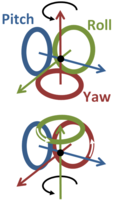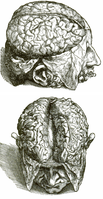User:John R. Brews/Medical: Difference between revisions
Jump to navigation
Jump to search
imported>John R. Brews (Created page with "==Medical== {{Gallery-mixed |caption=Medical |width=200 |lines=5 |Cupula deflection.PNG|Vestibular system: When the semicircular canal stops rotating, inertia causes the cupula t...") |
imported>John R. Brews |
||
| Line 8: | Line 8: | ||
|Vesalius cortex2.png|Veaslius’ ''Fabrica'' illustration of the human cortex. Top panel: Figure 2 of Book 7; Bottom panel: Figure 3 of Book 7. | |Vesalius cortex2.png|Veaslius’ ''Fabrica'' illustration of the human cortex. Top panel: Figure 2 of Book 7; Bottom panel: Figure 3 of Book 7. | ||
|Figure accompanying Fabrica- Table 2, Book 2.png|Veaslius’ ''Fabrica'' illustration of human musculature. | |||
}} | }} | ||
Revision as of 06:18, 20 September 2011
Medical
| Medical | |||||||||||||||||||||||||||||
| |||||||||||||||||||||||||||||



